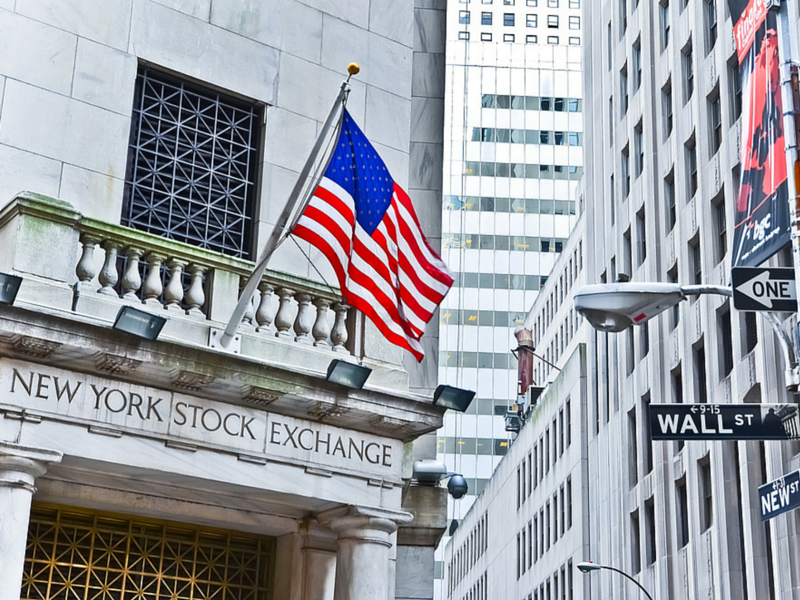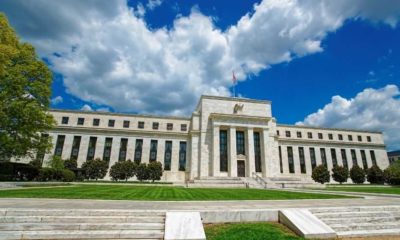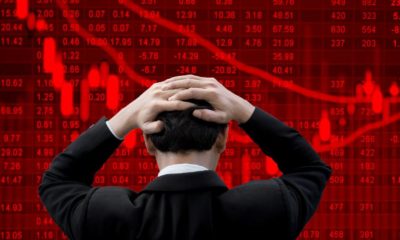Economy
The Reason Behind Wall Street’s Resilience

Looking back at the last few months, it seems that Wall Street has managed to remain extremely flexible and resilient under the onslaught of all the geopolitical upheaval that has been ricocheting around the world.
Some of the momentous events that have been hitting the markets in the recent past are:
- The shock outcome of the Brexit
- A failed attempted military coup in Turkey
- Terrorism and unrest, both domestic and international.
To quickly refresh the memory, take a look at the chart used below.
It shows the Standard & Poor’s 500 (S & P 500) reaction to the unexpected results of the referendum decision, by a narrow margin, to leave the European Union.
This led to the pound plummeting to exchange rate lows and global markets experiencing a rapid domino knock on effect.

Continuing with charts that show how the geopolitical climate is a definite catalyst to cause and effect on the markets, used below is the chart for the expected USD/TRY (US Dollar to Turkish Lira) exchange rate immediately after the news of the Turkish military coup.

And the final chart being used to display the markets seeming natural resilience is below.

It can be seen from the charts above – that Wall Street’s brief fainting spells were quickly followed by a recovery that saw it once again continuing to climb quite relentlessly.
To further illustrate this tenacious attitude, the yield on the ten-year Treasury note experienced a sharp fall on July 15, when the events of the attempted military coup in Turkey hit the news cycles.
The coup attempt failed and by that Monday the ten-year Treasury note bounced back when investors were quick to unload treasuries and other haven instruments once the situation in Turkey seemed resolved.
In an even more marked display of recuperative stamina was the U.S. market’s rapid-fire recovery after the United Kingdom voted to leave the European Union.
This result was unexpected and caused the markets around the world to shed $3 trillion of the market value in two nerve-wracking days.
While some other countries and their respective markets were still licking their wounds, Wall Street was quick to regain lost ground and recovered in about two weeks.
The pound is still yet to recover, and is loitering around $1.31, which is a low not seen for quite a few decades.
But, in the primary, bonds and stocks recovered in a relatively short space of time.
It all bears looking into a little deeper.
There is more than a fair share of opinions and theories for the reasons behind the market’s apparent strength.
Central bank liquidity has been very generous of late, in the view of chief economist at G+ Economics, Lena Komileva.
G+ Economics is a London-based market consultancy and research company.
Komileva is referring to the floating facility of accommodative policies that have been handed out by The Federal Reserve, The European Central Bank, and The Bank Of Japan, in the aftermath of the 2008 calamitous financial crisis.
Many investors viewed the bailout policies that were implemented then, as a safety net that will always be available when needs arise in the future.
When disturbances like the Brexit results threaten a possible temporary pause in global growth, the central banks have no other option other than to act as a circuit breaker to curtail the spread of the damage.
This is what Komileva believes.
She goes on to further state in a research note posted earlier this week, which the central monetary figures and authorities in the world, are not tracking different and separate national cycles anymore.
[ms_divider style=”normal” align=”left” width=”100%” margin_top=”30″ margin_bottom=”30″ border_size=”5″ border_color=”#f2f2f2″ icon=”” class=”” id=””][/ms_divider]
[ms_featurebox style=”4″ title_font_size=”18″ title_color=”#2b2b2b” icon_circle=”no” icon_size=”46″ title=”Recommended Link” icon=”” alignment=”left” icon_animation_type=”” icon_color=”” icon_background_color=”” icon_border_color=”” icon_border_width=”0″ flip_icon=”none” spinning_icon=”no” icon_image=”” icon_image_width=”0″ icon_image_height=”” link_url=”https://offers.thecapitalist.com/p/58-billion-stock-steal/index” link_target=”_blank” link_text=”Click Here To Find Out What It Is…” link_color=”#4885bf” content_color=”” content_box_background_color=”” class=”” id=””]This one stock is quietly earning 100s of percent in the gold bull market. It's already up 294% [/ms_featurebox]
[ms_divider style=”normal” align=”left” width=”100%” margin_top=”30″ margin_bottom=”30″ border_size=”5″ border_color=”#f2f2f2″ icon=”” class=”” id=””][/ms_divider]
Some of the banks like the BOJ, ECB, and the Fed still stay committed to maintaining lower rates for longer than usual to be able to offset the global volatility caused by:
- incidents of terrorism
- slow or lack of confidence
- capital shocks
- trade slow-downs
This is, in effect, camouflaging the natural market forces of capital and economic de-globalization and politics.
These forces, Komileva says, should not be fought.
Mario Draghi, the President of European Central Bank, mentioned central bank policies as one of the reasons why the financial markets in the Eurozone were not equipped to handle the post-Brexit volatility.
He further stated in a news conference, that the financing conditions were remaining highly supportive and that was contributing to a strengthening to credit creation.
The S & P 500 is up 6% this year to date.
Equities are trading at historically high valuations and with respectable returns despite still declining earnings.
Greater volatility remains a possibility, but any correction is set to be of a short duration because there is most assuredly a central bank put.
This refers to the belief in the markets that that policy makers will be continuing to respond pugnaciously to market turmoil by liquidity measures and easing measures.
This approach is forming the investors attitudes, and the unusual central bank activism has been seen to elevate a few asset prices artificially.
Market stability is not policy criteria for major central banks, per se.
It is merely regarded as a by-product of easing measures in practice.
The Federal Bank held back from raising the rates in June this year only days before the Brexit vote, and news relays about the shock results began to pour in.
At the same time, in comparison, the Bank of England was quick to hint that the cutting of rates was a very real possibility at the next meeting.
U.S. investment strategist for Allianz Global Investors, Kristina Hooper, said in a posting regarding the Brexit market repercussions, that the results pushed rate expectations in the United States out further while the economy was still growing.
That was positive news for the stock market in the short term.
For stock gains to continue to be sustainable, it will be needed to see less artificial improvements in growth earnings.
The Federal Bank has a dual mandate i.e. the following will help understand:
- Full employment
- Price stability or inflation.
But the Fed is unable to ignore any serious market turmoil.
The Fed has so far been able to invoke international instability, and this includes any concerns about the Brexit implications, to delay further increases in the current benchmark interest rate.
In 2015, falling commodities prices and the possible slowing of growth in China was deemed sufficient cause for the Federal Bank to postpone increases until the end of last year.
Come September, there are speculations or hints that rate increase in definitely in the cards.















